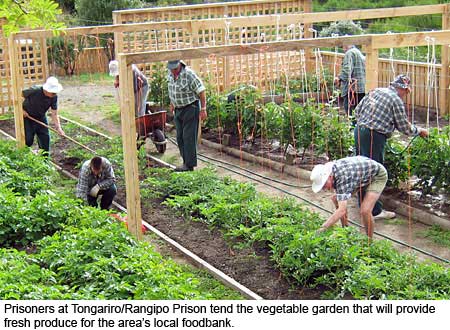Dr. Ashley Chaifetz. a research assistant at N.C. State University writes via UVM’s Food Feed,
Every year, an estimated 48 million Americans contract a foodborne illness. Those illnesses have come from pretty much every place where there’s food: grocery stores, hospitals, church dinners, county fairs, schools, restaurants, prisons, private homes, and even emergency food providers. I wish I could say that foodborne illness prevention was simple, that everyone knew how to reduce risk, that access to institution-specific food safety materials is readily-available, or that our food is always safe and we didn’t need to worry. Unfortunately, that’s not the case; although some food distributors are more closely regulated than others, it’s incredibly difficult to trace an illness to its source.
Foods distributed through shelters, food banks, food pantries, soup kitchens, backpack programs, and other institution-specific programs are referred to as emergency food. In North Carolina, there are seven food banks and at least 2,500 emergency food providers associated with Feeding America (the country’s largest hunger-relief charity), plus hundreds more independent organizations.
To examine and analyze the standard operating procedures and supply chain of the food pantry system, I conducted interviews at 105 food pantries in 12 counties across North Carolina. While committed to social welfare, the food pantries are self-governed, and the issues of hunger and nutrition can supersede other concerns for the vulnerable populations served. Increasingly, food pantries create rules and regulations in the absence of those created by any level of government. Each food pantry operates with its own set of rules, some of which are formalized and some that are informal.
While their mission is similar, food pantries are diverse. More than 80% of the pantries distribute fruits and vegetables, as well as frozen meat (pork, beef, and chicken), in addition to canned and packaged items. On average, the managers get food from 3.73 sources, including food banks, grocery stores, food distributors, school gardens, farms, hunting trips, federal commodity programs (TEFAP and SNAP), restaurants, individuals, and food drives. Some pantries distribute the same amount of food to each person, while other managers base the number of bags individuals receive on family size. Many food pantries now use a client-choice model, which means the food pantry is set up like a grocery store, allowing the clients to “shop.” Some pantries are open six days per week, while others are open only once per month. Their capacity and ability to store items varies, and few pantry managers receive food safety training of any kind.
As a result of this data analysis, I identified the gaps in their food safety prevention measures and, with Dr. Ben Chapman at NC State University and North Carolina Cooperative Extension, put together a series of online videos to better inform pantry mangers and volunteers of the best food handling and storage practices at food pantries. At that time, best practices for food pantries were nowhere to be found; these are publicly available to all, without a password or special program.
- Given the importance of the topic, the first video is centered on general food safety information, details on foodborne illnesses, riskier foods, wild game, and past-date foods (which also encompass the entire fourth video).
- Risk prevention is key, and there are low-cost ways to prevent contamination when storing and handling food. Based on the 2009 Food Code (as used in North Carolina), the second video concentrates on three focus areas: time-temperature abuse, cross-contamination, and hand-washing.
- So that new and veteran volunteers have the same information on how the pantry is designed to operate (and be kept safe), the third video provides detail on writing standard operating procedures and how to get information on recalled foods (including links from the FDA). Though less related to food safety, there’s a fourth video on how long items can be consumed past the date on the package.
- Six additional documents have been provided to assist in implementing new protocols, from checklists and templates for writing the standard operating procedures, to signage, including a flowchart on how to tell if canned foods are ok to eat.
Food pantry managers and volunteers might be confused about food handling—and what we do at home is not always the best practice. Regardless of income level, consumers should have access to food that is safe, requiring all supply chain actors to do their respective parts. Unlike other food systems institutions, food pantries are private (predominately faith-based) organizations that provide a public good; that designation does not mean they should be treated as outliers in terms of food safety and handling information.
Ashley Chaifetz will be a speaker at the UVM Food Systems Summit on June 16-17 at the UVM Davis Center. For more information or to register, visit uvm.edu/foodsystemssummit.


 The New York Times reported earlier this month
The New York Times reported earlier this month